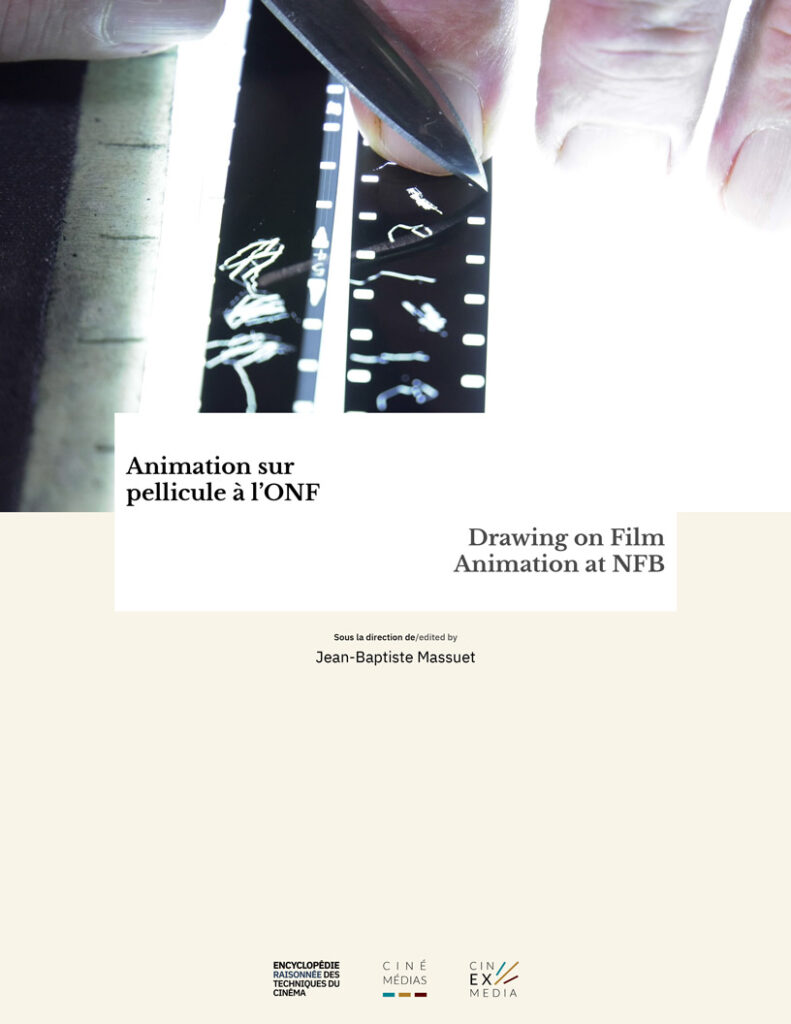Guest-edited by Jean-Baptiste Massuet
Whereas the “traditional” animated drawing, in its logic of mechanization, brings to mind the functioning of a movie camera – and by metonymy of the film industry as a whole –, drawing on film animation offers the opportunity to bypass entirely that mechanical artefact. Animators who use this technique work directly on the film stock, etching or painting frame by frame the components and movements of the image which will appear in projection. This dissenting approach, enabling the filmmaker to be solely in charge of his or her creation, is strongly associated with the National Film Board of Canada (NFB) animation studio, known for its artisanal rather than industrial vision. To study animated drawings on film is thus to think about the way in which this technique gives rise to an adaptability that seems intrinsic to it, and to the way in which the NFB studio have contributed to this by instituting new forms of animation through its constant invention.
Table of contents
- Introduction (Jean-Baptiste Massuet)
- The Choice of Film Stock (Jean-Baptiste Massuet)
- Graphic Tools (Chloé Hofmann)
- Working Equipment (Jean-Baptiste Massuet)
- Registration (Jean-Baptiste Massuet)
- Drawing Sound on Film Stock (Jean-Baptiste Massuet)
- Viewing the Film (Jean-Baptiste Massuet)
- Printing and Distributing the Film (Jean-Baptiste Massuet)



